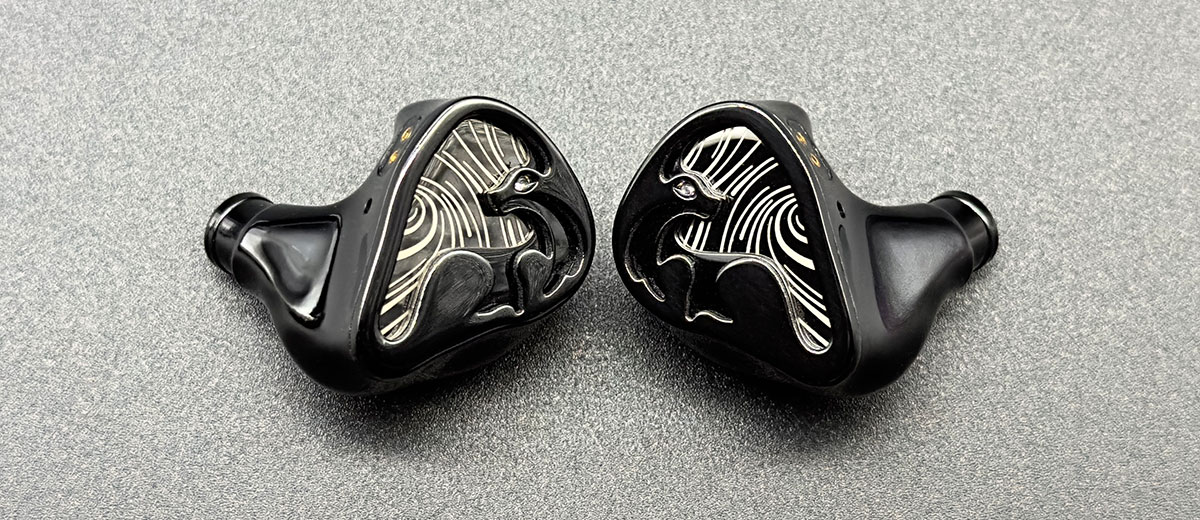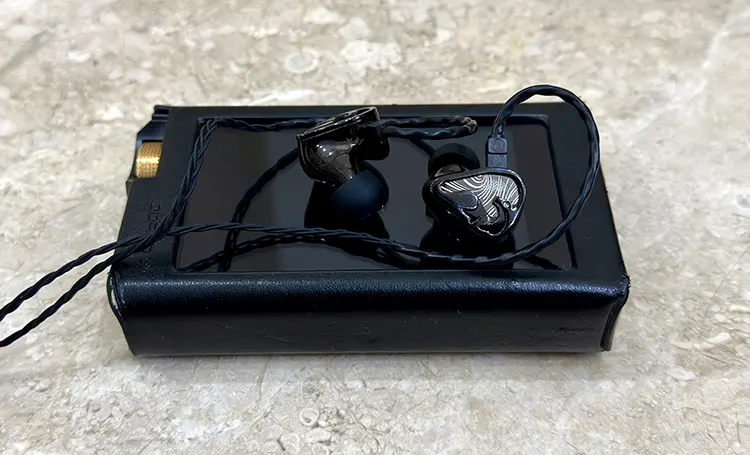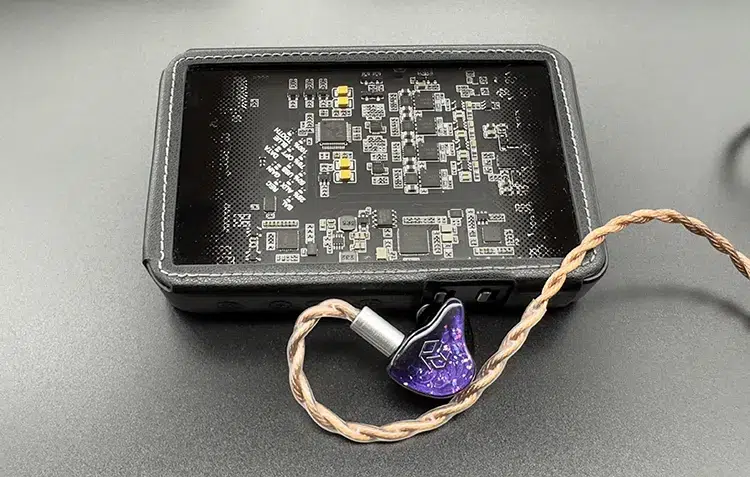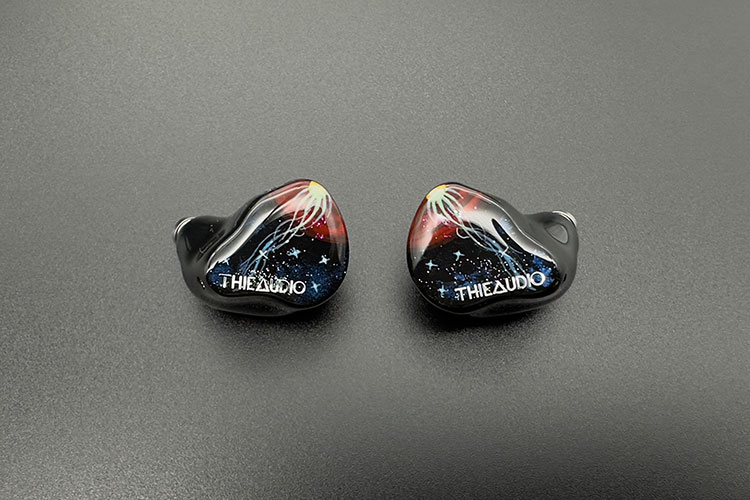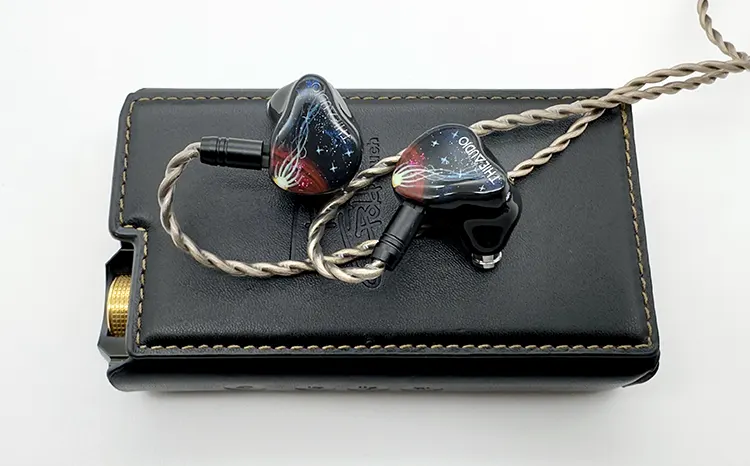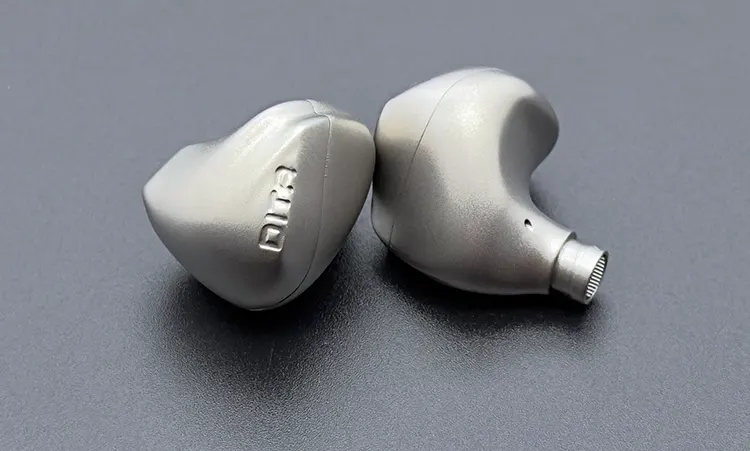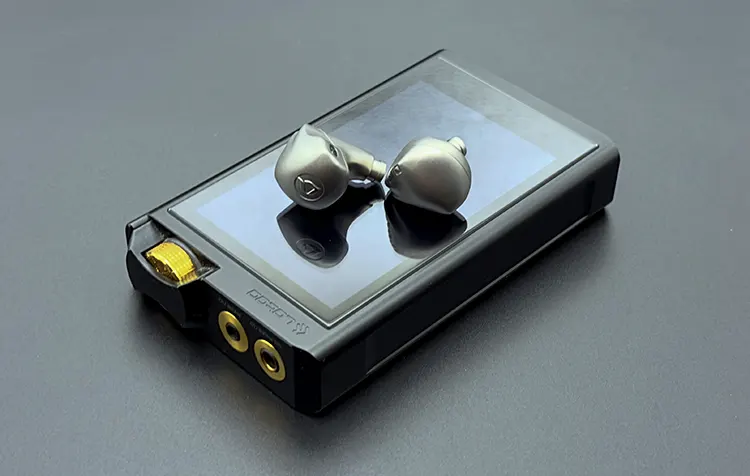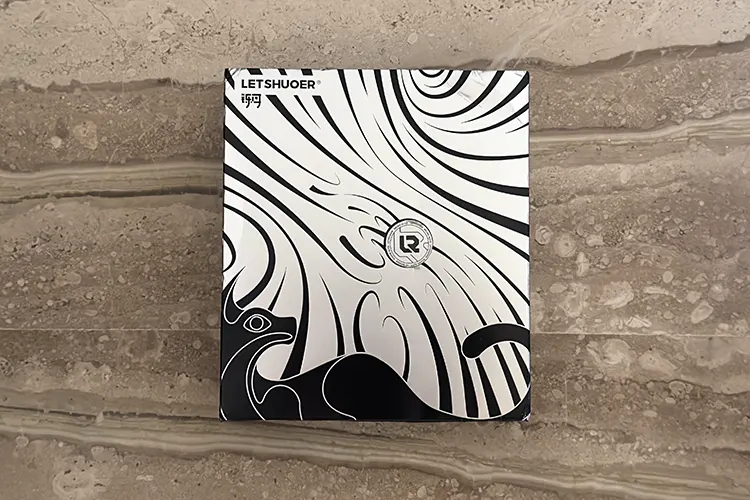Synergy
Efficiency & Sensitivity
The Mystic 8 has an impedance of 18Ω @ 1 kHz and a sensitivity rating of 107 dB/Vrms. The IEM does not demand too much power and can be easily driven by most of the sources around.
From smartphones to low-power-rated dongles, everything can comfortably drive the Mystic 8. It does not have a scaling property, so throwing a powerful source does not do any good.
On my Lotoo Paw Gold Touch, it takes around 30 volume clicks to reach a satisfactory volume level for listening.
Pairings
For Mystic 8’s neutral and flat tuning profile, I recommend pairing it with warm-leaning sources. Pairing it with bright sources can make it sound a bit cold and dry.
With sufficient power and a satisfactory bass profile, the LPGT has an excellent synergy with the Mystic 8. While it doesn’t make any significant changes to the IEM’s lean bass, it improves the texture and adds a bit of body to the bass and lower midrange.
The midrange is highly resolving, and the notes carry satisfactory weight. The upper midrange to treble region remains smooth yet detailed, without any hint of sharpness.
On the Questyle CMA18P, a DAC/Amp featuring the AKM 4493 DAC chipset, the sound remains more or less similar to what the LPGT offers, but is slightly less resolving.
Although the device provides significantly more power than the LPGT, the extra power does not translate to a more spacious sound or better dynamics.
One notable advantage of this pairing is the absence of background static hiss, which the CMA18P tends to exhibit with many IEMs.
Select Comparisons
Yanyin Carmen
Technical
The Carmen is an all-balanced armature driver IEM with ten balanced armature drivers. For the low-end, Carmen employs four Sonion drivers, while in the midrange, it uses two Sonion drivers, and the high frequencies are handled by another pair of full-sized Sonion drivers.
Additionally, a custom dual driver is specifically dedicated to the ultra-high frequencies. The drivers are arranged in a 4-way crossover system with four independent sound bores to precisely manage frequency distribution.
The Yanyin Carmen has an impedance of 10Ω @ 1 kHz and a sensitivity rating of 109 dB/Vrms. The IEM can be comfortably driven by sources with lower power output, such as dongles and smartphones.
Like the Mystic 8, it doesn’t require extra power to shine. On my LPGT, both the IEMs take a volume level near 30. The Carmen, however, can take a few more clicks.
Design
The Carmen features shells built in resin, while the Mystic 8 is built in titanium alloy shells, offering a more robust build. The Carmen has a more artistic design, as the metal shell on the Mystic 8 leaves very limited scope.
While both IEMs are comfortable to wear, the Mystic 8 offers a better fit due to its smaller shells. The shells on Carmen are not too big either and do not pose any fitting issues.
Both the Mystic 8 and Carmen use a 0.78mm 2-pin connector. The stock cable on both IEMs terminates in a 4.4mm balanced end. The Carmen is available with either 3.5mm or 4.4mm terminated cables, which can be chosen at the time of purchase, and is more robustly built.
In terms of packaging, the Mystic 8 provides a much better experience. It comes in a large, spacious box with thoughtfully included accessories, including a carry case and a wide variety of ear tips. The Carmen, on the other hand, has minimalistic packaging and does not include a carry case.
Performance
Like the Mystic 8, the Carmen has a midrange-centric tuning, but it’s more colored and has more warmth, offering a bit less airy and resolving sound.
The bass performance on the Carmen is decent, considering it’s an all-balanced armature configuration. The bass has better quantity in both the sub-bass and mid-bass regions.
Even with less quantity, the Mystic 8’s bass is a tad better in texture and layering, and I find it to be crisper and tighter.
In the midrange, the Carmen presents a rich, warm character but is not as authentic and natural as the Mystic 8. Carmen’s presentation is quite similar, with a prominent, close-to-ears midrange, but the coloration is obvious.
The Mystic 8 has a cleaner timbre and resolves better. The lower midrange on the Carmen is thicker and denser and carries more body.
Instruments like the cello and bass guitar have a more prominent presence, which seems very lean and feeble on the Mystic 8. There is more sweetness in the midrange on the Mystic 8. The upper midrange is more detailed and forward on the Mystic 8, while the Carmen feels a bit softer and lacks energy.
In the treble region, both IEMs offer a smooth and non-exaggerated presentation. The Mystic 8 has a crisper and more energetic treble. It offers more sparkle and air, whereas the Carmen feels a bit more relaxed, but the difference is not night and day. The notes offer better timbre on the Mystic 8.
The Carmen offers a more holographic, taller, and deeper soundstage. Imaging is more precise on the Mystic 8, which offers better spatial cues. It also resolves better, offering a cleaner and more detailed sound, with micro-details being more vivid.
Overall, the Mystic 8, even with a leaner bass presentation, offers a more true-to-life midrange.
THIEAUDIO Hype 10
Technical
The THIEAUDIO Hype 10 is a hybrid IEM featuring dual dynamic drivers and ten balanced armature drivers. It incorporates the IMPACT2 technology common in the other Hype series IEMs, such as the Monarch MKIII and Oracle MKIII.
Hype 10 implements two dynamic drivers and ten balanced armatures. In the low-frequency region, Hype 10 incorporates two Sonion balanced armature drivers in addition to the dual dynamic drivers.
Hype 10 has an impedance of 18Ω @ 1 kHz and a sensitivity rating of 104 dB/Vrms. Like the Mystic 8, it can sound full at lower volume levels and pairs well with sources of lower power specifications. On LPGT, both IEMs take a volume level of less than 35.
Design
The Hype 10 features resin shells that are noticeably larger in comparison. Its faceplates showcase an artistic, cosmic-inspired design with subtle shimmers that resemble stars.
In contrast, the Mystic 8’s metallic shells are more durable and offer a more ergonomic build, though they follow a minimal design approach. When it comes to fit, the smaller shells of the Mystic 8 are more comfortable.
Both the Hype 10 and Mystic 8 use a 0.78mm 2-pin connector. The Hype 10 comes with a modular cable offering interchangeable terminations, including 4.4mm, 3.5mm, and 2.5mm options, while the Mystic 8 is offered only with a 4.4mm termination.
Although the stock cable on the Hype 10 isn’t very robustly built, I still prefer it over the one provided with the Mystic 8.
While the Mystic 8 offers a more elegant unboxing experience, the Hype 10 takes a minimal approach. Mystic 8 also includes more thoughtfully selected and higher-quality accessories.
Performance
The Hype 10 delivers a warm sound signature with boosted bass and a near-neutral tilt in the midrange. It doesn’t fully lean into neutrality, though, maintaining a lush and rich midrange and smooth treble.
Hype 10, with its two dynamic drivers, offers a more authoritative bass performance compared to the lean bass on the Mystic 8.
There’s a pleasant reverberation that adds depth to the bass. The texture and layering aspects are very impressive. This bass remains controlled and does not intrude into the higher frequencies.
In the lower midrange, the notes carry enough weight without feeling overly dense or thick. This region is lean on the Mystic 8, making instruments and male vocals lack heft.
While the midrange is exceptionally natural on the Mystic 8, the Hype 10 leads with a lusher and fuller presentation. The sweetness factor is quite close on both, but the Hype 10 offers a more engaging and immersive midrange.
In the treble region, Hype 10 leads the way with an airier and more detailed treble range. It feels cleaner and crisper of the two, offering a more energetic yet unexaggerated treble range that does not bother you even in longer sessions.
Mystic 8’s treble is just a toned-down version of Hype 10’s. It offers all the details but misses sparkle and air.
Hype 10 offers a better level of technicalities. The soundstage is more holographic with better depth and a similar width, and the imaging aspects are also more accurate.
It also does a better job in instrument separation and layering, offering more space for the instruments to breathe. Hype 10 is just a bit ahead in the resolution department, bringing forth micro-details in a better way.
DITA Audio Mecha
Technical
At the core of Mecha lies a single 10mm LiMa-Carbide dynamic driver with a dual magnet setup. The LiMa-Carbide driver consists of a 9mm lithium-magnesium diaphragm surrounded by a 1mm carbide diaphragm.
Additionally, there is a special venting system with dual vents on the shells that helps in achieving a well-balanced frequency response and tonality.
DITA Audio Mecha has an impedance of 32Ω @ 1 kHz and a sensitivity rating of 113 dB/Vrms. The Mecha is highly efficient to drive. Like the Mystic 8, even with low power sources, the Mecha can sound full.
Mecha sounds stable if paired with more powerful sources. The dynamics improve a bit, helping it with a more open and spacious sound. Mystic 8 does not demand or scale much with additional power.
Design
The Mecha is built with titanium shells that feature a slightly matte finish. In comparison, the Mystic 8’s shells have a glossy appearance.
Mecha’s shells are larger, while the Mystic 8’s are smaller but similar in weight. Like the Mystic 8, Mecha’s shells are ergonomically shaped, with smooth curves and no sharp edges or bumps.
Both the Mecha and Mystic 8 use a 0.78mm 2-pin connector. The Mecha comes with a custom-designed Churro cable that has a superior build and offers modularity with 3.5mm single-ended, 4.4mm balanced, and USB Type-C plug options.
Mecha delivers a very premium unboxing experience, but Mystic 8 stands out with a more elegant presentation. Both IEMs include thoughtfully selected, high-quality accessories.
Personally, I prefer the carry case of the Mystic 8, as it is more spacious and offers a more premium feel.
Performance
The Mecha is a bass-forward IEM with a powerful, bold low-end, a rich musical tone, and a smooth and detailed treble region.
The Mystic 8 has a leaner bass response, missing authority and impact, which results in a loss of fun and excitement. The bass on the Mecha has both quantity and quality.
It boasts a very detailed and well-textured bass range. While the Mystic 8 lacks the necessary bass impact, it still maintains satisfactory quality.
In the lower midrange, the Mystic 8 lags behind due to its lean nature. The bass shelf on the Mecha adds substantial body and thickness to the lower midrange, giving it lushness and fullness.
Vocals on both IEMs feel intimate and very natural. They both offer a clean midrange with lifelike timbre.
The Mecha has a more immersive and engaging midrange due to its fuller presentation. It also exhibits more warmth in this region. The upper midrange is slightly more forward and energetic on the Mecha, giving it better extension than the Mystic 8.
In the treble region, the Mecha leads the way with an airier and more detailed presentation, whereas the Mystic 8 is smoother and more forgiving.
The treble on the Mystic 8 sounds more relaxed and natural in comparison. The Mecha brings vocals and upper harmonics to the front, enhancing presence and clarity with its more forward tuning.
The Mecha boasts a more immersive soundstage with better depth and similar width. The Mystic 8’s imaging feels more precise, with greater accuracy in the spatial arrangement of instruments.
Resolution is a touch better on the Mystic 8, offering a clean and crisp presentation. It’s also a winner in detail retrieval, bringing forth micro-details more accurately. The Mecha offers better dynamics and feels more stable with powerful sources.
My Verdict
In a market where many new releases can feel repetitive and lack a fresh approach, the 8 BA driver LETSHUOER Mystic 8 stands out with its unique sound signature.
It’s not your typical bass-boosted or treble-focused IEM; rather, it leans toward a very neutral and flat tuning without sacrificing musicality.
Neutral sets are often perceived as cold or analytical, but the Mystic 8 is neither. While the bass does lack impact, the spotlight is firmly on the midrange, which is the real special sauce of the Mystic 8.
It’s as authentic and natural as it can get. For certain genres such as classical, folk, and acoustic music, the Mystic 8 truly shines, making it a specialist set if you’re seeking a clean, natural, and resolving midrange.
That said, this is certainly not the IEM for those chasing fun or excitement. The lean bass may be off-putting for many listeners. I wish LETSHUOER had managed to sneak in just a bit more bass impact while keeping everything else the same; that could have made the Mystic 8 something truly special.
I encourage people to audition the set because if you’re someone who appreciates this kind of tuning, there’s likely no other IEM that will suit you better.
LETSHUOER Mystic 8 Technical Specifications
- Driver Configuration: 4 Sonion BA drivers + 4 Knowles BA drivers
- Impedance: 18Ω @ 1kHz
- Sensitivity: 107 dB @ 1 kHz
- Frequency Response: 20 Hz–40 kHz
- Cable: 1.25mm 8 x 20 cores x 0.05mm silver-plated monocrystalline copper.

